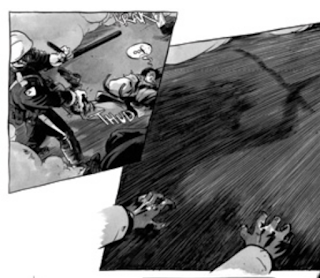Week 8 Representing
Week 8
I read the
March, and it was the first time I read a non-fictional comic story, more like
a historical story. Personally, I’m not a big fan of these comic, but I did
found something interesting.
First the
artwork is truly stunning. If I have to ask myself what is the purpose of
making these historical story comic than read it on the paper. I would properly
say it is the immersive experience it brings to the audiences. By the usage of image
composition, John Lewis was able to draw audiences into what was really happened
during the African American Civil rights movement. I put some examples below to
better demonstrate the idea. As you can
see, reader can experience the civil right movement through the artist’s point
of view, which is far more powerful than plain text on paper.
Another advantage
of making history comic that I can think of is it makes a better educational
resource than words. Due to the nature of comic, it tends to be relatively easy
to pick up and read medium for younger kid. Therefore, instead of just read and
quickly forget the content of black civil right moment, the impression of these
immersive image will root in reader’s mind.
In the end,
I do believe different than the most comic, these historical comics are not make
to entertain people but rather educated, and called for public attention for
minority representation in comic. In other words, I’m glad to see that a new
generation of artists start to challenge the various stereotypes of character representation
in the traditional comic industry.


Comments
Post a Comment